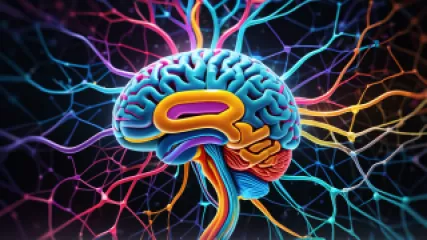How to Understand the Neuroscience of Decision Making
Understanding the neuroscience of decision making involves delving into the intricate processes that our brains undergo while making choices. Whether these decisions are rational or emotional, they are influenced by a complex interplay between various brain regions and neural pathways. This comprehensive guide aims to provide an in-depth look at the psychology of decision making, exploring how our brains navigate the myriad options we encounter daily.
The Basics: What Constitutes Decision Making?
Decision making is a cognitive process resulting in the selection of a belief or a course of action among several possible alternatives. Every decision-making process produces a final choice, which may or may not prompt an action. The process is heavily influenced by both rational and emotional factors, making it a fascinating topic for exploration.
Rational Decision Making
Rational decision making involves logical, methodical steps to arrive at a conclusion. It often relies on data, facts, and structured methodologies. People who employ rational decision-making strategies usually use tools such as cost-benefit analysis, pros and cons lists, and statistical models to inform their choices.
Emotional Decision Making
Emotional decision making, on the other hand, is driven by feelings and intuition. Our emotions can sometimes override logic, leading us to make choices based on what feels right rather than what makes the most sense objectively. Emotional decision making can be both beneficial and detrimental, depending on the context and individual circumstances.
Neuroscience Behind Decision Making
The brain is the central organ responsible for processing information and making decisions. Different areas of the brain contribute to different types of decision making. Understanding the neuroscience of decision making involves recognizing the roles of these brain regions and neural processes.
The Role of the Prefrontal Cortex
The prefrontal cortex (PFC) is crucial for rational decision making. Located at the front of the brain, the PFC is involved in complex behaviors such as planning, personality expression, decision making, and moderating social behavior. It’s the part of the brain that helps us weigh the pros and cons and foresee the consequences of our actions.
The Limbic System and Emotions
The limbic system, including structures like the amygdala and hippocampus, plays a significant role in emotional decision making. The amygdala is particularly important for processing emotions, such as fear and pleasure, and it influences decisions based on these emotions. The hippocampus is involved in forming new memories and connecting them to emotions, thus affecting our choices based on past experiences.
Steps to Understand the Neuroscience of Decision Making
To grasp the complexities of decision making from a neuroscientific perspective, follow these steps:
Step 1: Learn About Brain Anatomy
Start by familiarizing yourself with basic brain anatomy. Understanding where different brain regions are located and their primary functions will provide a foundation for comprehending how these areas interact during decision making.
- Study the major parts of the brain, including the cortex, limbic system, and brainstem.
- Learn about the specific roles of the prefrontal cortex, amygdala, hippocampus, and other relevant structures.
- Use diagrams and models to visualize the brain's layout.
Step 2: Understand Neural Pathways
Neural pathways are the connections between neurons that facilitate communication within the brain. These pathways are essential for transmitting information and play a critical role in decision making.
- Read about synapses, neurotransmitters, and how neurons communicate.
- Understand the significance of neural plasticity—the brain's ability to reorganize itself by forming new neural connections.
- Consider how different pathways are activated during rational versus emotional decision making.
Step 3: Explore Decision Making Models
Various models explain how decisions are made, incorporating both rational and emotional elements. Familiarize yourself with these models to gain a deeper understanding of the decision-making process.
- Rational Choice Theory: Focuses on logical, systematic approaches to decision making.
- Dual Process Theory: Suggests that decisions are made through two distinct systems—one fast and emotional, the other slow and rational.
- Prospect Theory: Examines how people make choices involving risk and uncertainty, emphasizing the value of potential losses and gains.
Step 4: Recognize the Influence of Biases
Biases can significantly impact our decisions. By understanding common cognitive biases, you can become more aware of how they might influence your choices and take steps to mitigate their effects.
- Confirmation Bias: The tendency to search for, interpret, and remember information in a way that confirms one’s preconceptions.
- Anchoring Bias: Relying too heavily on the first piece of information encountered when making decisions.
- Availability Heuristic: Overestimating the importance of information readily available, often due to recent exposure.
Step 5: Study Real-World Applications
Investigate how the principles of decision making are applied in various fields, such as business, healthcare, and personal relationships. This will provide practical insights into how theoretical concepts are used in everyday life.
- Business: Learn how executives use decision-making strategies to guide corporate strategy and operations.
- Healthcare: Understand how doctors make diagnostic and treatment decisions, balancing evidence-based medicine with patient preferences.
- Relationships: Explore how individuals make decisions regarding friendships, romantic partnerships, and family dynamics.
Case Studies: Neuroscience of Decision Making in Action
Case studies offer a detailed examination of specific examples, providing valuable insights into how decision-making theories and neuroscience principles manifest in real-life scenarios.
Case Study 1: Business Decision Making
Consider the case of a company deciding whether to launch a new product. The decision involves extensive market research, financial analysis, and strategic planning. Executives must weigh the potential risks and rewards, considering both rational data and emotional factors, such as brand reputation and customer loyalty.
Case Study 2: Medical Decision Making
In healthcare, doctors often face complex decisions, such as choosing the best treatment for a patient with multiple health issues. This process requires evaluating clinical evidence, considering patient preferences, and sometimes navigating ethical dilemmas. The balance of rational analysis and empathetic understanding is critical in these situations.
Case Study 3: Relationship Decision Making
Personal relationships involve numerous decisions, from resolving conflicts to making long-term commitments. These decisions are influenced by both logical considerations (compatibility, shared values) and emotional factors (love, trust). Understanding the neuroscience behind these choices can help individuals navigate their relationships more effectively.
Practical Tips for Healthy Decision Making
Making healthy decisions involves balancing rational analysis with emotional intelligence. Here are some practical tips to help you improve your decision-making skills:
- Take Your Time: Avoid making hasty decisions. Give yourself time to gather information and reflect on your options.
- Seek Diverse Perspectives: Consult others to gain different viewpoints, which can help you make more informed choices.
- Practice Mindfulness: Being present and mindful can enhance your awareness of both rational and emotional factors, leading to better decisions.
- Evaluate Past Decisions: Reflect on previous decisions to learn from your experiences and improve future choices.
- Stay Informed: Continuously educate yourself about decision-making strategies and neuroscience to refine your skills.
Conclusion: The Intricacies of Decision Making
Understanding the neuroscience of decision making provides a comprehensive view of how our brains navigate the complex landscape of choices. By exploring the roles of different brain regions, neural pathways, and cognitive biases, we can gain valuable insights into the processes underlying our decisions. Incorporating both rational and emotional elements into our decision-making strategies can lead to healthier, more balanced choices in all areas of life.
As you continue to explore the fascinating world of decision making, remember that it is a dynamic and evolving field. Stay curious, keep learning, and apply these insights to enhance your decision-making skills and overall well-being.






